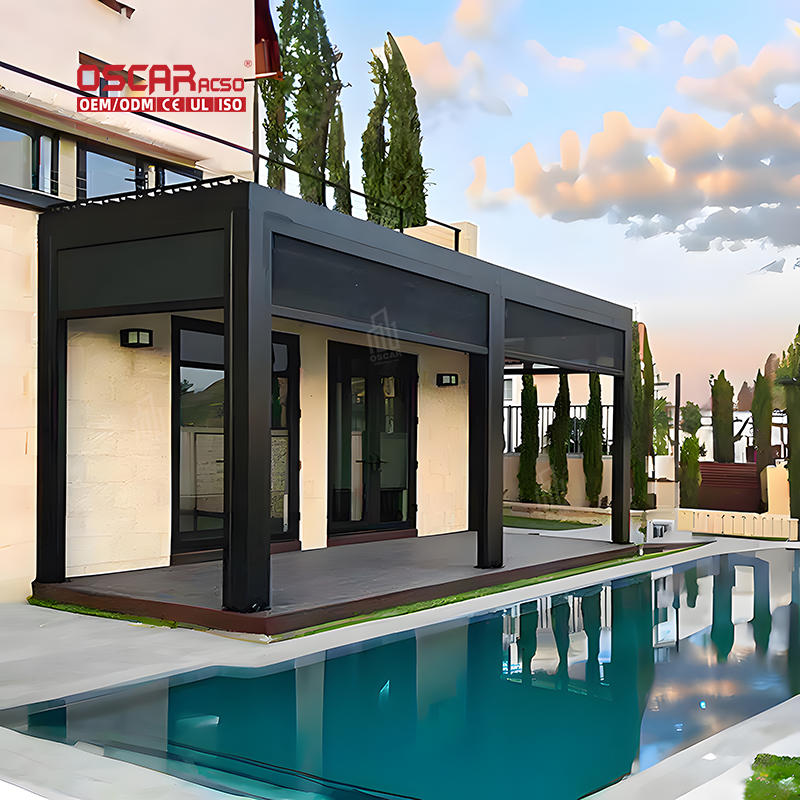Natural Biodynamic Pergolas, Harmonizing Eco-Conscious Design with Intelligent Comfort
Imagine an outdoor structure that breathes with the environment, adapts to the seasons, and harmonizes with nature’s rhy...
.jpg)
Imagine an outdoor structure that breathes with the environment, adapts to the seasons, and harmonizes with nature’s rhythms. This is the essence of a natural biodynamic pergola—a transformative addition to modern living spaces that blends sustainable materials with intelligent climate control. 🌿
The Foundation: Why Natural Materials Matter
At the heart of a truly biodynamic pergola lies the choice of natural, renewable materials. Wood, particularly varieties like cedar, redwood, or reclaimed timber, isn’t just aesthetically warm—it’s an eco-powerhouse. These woods are naturally resistant to rot and insects, and when sourced from responsibly managed forests, their cultivation supports biodiversity and reduces environmental impact. Unlike synthetic alternatives, wood has a lower energy production footprint and continues storing carbon long after it’s been transformed into your pergola. It’s a timeless choice that ages gracefully, blending into garden settings while supporting planetary health.
But what about durability? With proper sealing and maintenance, wooden structures can last decades. For those seeking a rustic touch, reclaimed barn beams or locally sourced stone footings add character and further reduce transportation emissions.
Bioclimatic Intelligence: The Magic of Adjustable Louvers
A biodynamic pergola goes beyond passive shading. Its defining feature? Adjustable louvers, typically crafted from recyclable aluminum, allow you to modulate sunlight, ventilation, and rain protection with precision. These louvers can be tilted to block harsh midday sun, fully opened to welcome warmth on cooler days, or sealed tight during rainstorms—all while promoting natural airflow to prevent heat buildup.
This isn’t just about comfort; it’s about energy efficiency. By reducing reliance on air conditioning and artificial lighting, these structures significantly cut household energy consumption. Some advanced models even integrate solar-powered motors for louver adjustment, creating a self-sustaining ecosystem.

Sustainability Showdown: How Does It Compare?
How do natural biodynamic pergolas stack up against conventional options? Let’s break it down:
Feature | Natural Wood Pergola | Aluminum-Only Pergola
|
|---|---|---|
Environmental Impact | Renewable; stores carbon | Energy-intensive production |
Maintenance | Requires periodic sealing
| Minimal; occasional rinsing |
Longevity | Decades with care | Extremely high; weather-resistant |
Recyclability | Biodegradable or upcyclable | Fully recyclable (but often virgin material) |
Aesthetic | Warm, natural, traditional | Sleek, modern, industrial |
While aluminum pergolas boast recyclability and low upkeep, their production relies on bauxite mining—a process linked to ecosystem disruption and high CO₂ emissions. Wood, especially when paired with bioclimatic technology, offers a balanced solution: natural beauty with intelligent functionality.
Designing Your Ecosystem: Vines, Accessories, and Personalization
A biodynamic pergola thrives when integrated with its surroundings. Encourage climbing vines like wisteria or clematis to weave through the structure, providing organic shade and enhancing biodiversity. For evening enjoyment, add LED lighting or subtle heaters powered by renewable energy.
Customization is key. From stone columns to rope accents crafted from branches, personal touches amplify its charm. For urban settings, consider retractable side panels or rain sensors that automatically close louvers during showers.
The Bigger Picture: Well-Being and Cultural Shifts
Why are these structures gaining global traction? They represent a shift toward biophilic design—an architectural approach that reconnects humans with nature. Studies show that exposure to natural materials and dynamic outdoor spaces reduces stress and enhances creativity. In Spain, for example, bioclimatic pergolas have become central to social gatherings, reflecting a culture that prioritizes outdoor living without compromising sustainability.

Moreover, by choosing materials like FSC-certified wood or recycled aluminum, homeowners indirectly support ethical forestry and circular economies.
Navigating the Challenges
No solution is perfect. Wood requires maintenance to prevent decay, and not all suppliers adhere to sustainable logging practices. Always seek certifications like FSC or Demeter for assurance. Aluminum, though durable, carries a hidden ecological cost—prioritize manufacturers using recycled content.
Ultimately, the goal is balance: a structure that adapts to your climate while respecting the planet’s limits.
Final Thoughts: Where Nature Meets Innovation
Natural biodynamic pergolas are more than shade providers—they’re active participants in ecological stewardship. By marrying the carbon-storing power of wood with the adaptive intelligence of bioclimatic design, they create spaces that are both luxurious and responsible. As climate consciousness grows, these structures offer a blueprint for future outdoor living: one where comfort doesn’t come at the earth’s expense. 🌍✨


.jpg)
